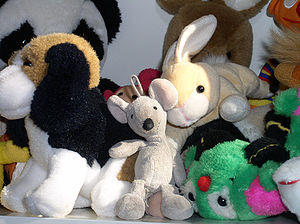
Tips for Helping Your Children Give Away Old Clothes and Toys
If your family is anything like mine, your kids’ rooms are filled with stuff. Clothes, toys, books, art supplies and school projects spill out of closets and cover the floors. However, kids are often hesitant to purge these materials because, to their minds, these are treasured possessions. Where you see a toy chest overflowing with stuffed animals and dolls, kids see loved friends and old playmates; where you see items your kids have clearly outgrown, your kids see items that are indisputably theirs.
It’s no wonder that trying to get your kids to sort through and cull old clothes and toys often ends in frustration and tears. You’re asking your children to give up their own belongings, and they’re too young to realize that there will be plenty of new things to take their place down the road.
Here are a few tips to help your children understand why an annual sort and purge of clothes, books and toys is important, and why part of being an eco-aware family is understanding when you have enough.
Set a good example
Make sure that your kids see you and your partner giving away and recycling your own possessions. If you ask your kids to give up their old board books but you don’t similarly cull down your own bookcase, the kids rightfully feel that their possessions are being singled out; that their sense of ownership is less valuable than yours.
Let your children help you box your own items for charity or for sale. Explain that you no longer watch these DVDs or wear these clothes, and that you’re letting other people have the opportunity to enjoy them.
Talk about what happens to the belongings
Talk to your kids about how not every family has enough clothes to wear or toys to play with. Explain that the old boots that don’t fit anymore can go to another young child who needs a pair of boots. Talk about how old cell phones and computers go to electronic recycling centers to get safely turned into new products. Read stories like “A Chair For My Mother” or the classic first chapters of “Little Women” and talk about the importance of giving.
Incentivize with a yard sale
Although it’s important to teach your children the value of donating belongings to charity, it’s also important to teach children about how to earn and manage money. Grade-school kids are old enough to help organize a yard sale, including pricing items, designing signs and making change for customers. Since your children are selling their belongings, it’s only right that they keep the money. This also means that you have the opportunity to talk about money management, including saving for the future and donating part of the yard sale income to a favorite charity.
Listen to your children
Even children who understand the importance of giving back are going to have a few items to which they remain resolutely attached. Often these are not the items you would expect; kids will pay less attention to the teddy bear bought by Grandma and more attention to the cheap stuffed bear they won at a school carnival. If your child is reluctant to give up an outgrown sweater or an old toy, don’t force the issue. Let the children make the final decisions about what gets donated or sold and what gets kept, and remember that in a few years they’ll have fully outgrown the sweater or the picture books and will be happy to pass them along.
Talk to your children about having enough
The last part of this process is talking about “enough.” What does it mean to have enough? What does it mean to take no more than your share? This is one of the key parts of raising an eco-aware child: making sure your children grow up understanding the importance of sharing the world’s resources. This understanding starts at home, with the overflowing toy chest.
Use these tips the next time you and your family face rooms of overflowing stuff. With the right approach and the right attitude, you’ll clear out some clutter, help out other families and teach your children the importance of giving.
Image: Different types of stuffed toys (Photo credit: Wikipedia)
Leave a Reply